Home is a warm word for all people. Hard to buy a house, everyone wants their home is the most comfortable place. However, there are always some irresponsible businesses that are delivered to your house. When the family is no longer comfortable, when the decoration is full of troubles...
After taking the house, one thing before the renovation became a top priority, that is --- home inspection. If the problem can be found when the inspection of the house, then the follow-up decoration will definitely be less effective. Today, the inspection room scene, teach you a few strokes, how to find the problem. Home inspection is so simple.

1. Empty drum:
First, hollow performance
Hollowing is caused by the fact that the wall surface, the ground floor and the ceiling surface are not cleaned, or that the base layer is not properly handled, or that the surface layer and the base layer are not properly proportioned. This results in a loose bond between the stucco layer or the ground surface layer and the base layer or the two different surface layers. There is an empty sound when tapping the surface layer with a hammer.
Second, the danger of emptying
In the long run, drums will form on the ground, the floor or tiles will be arched, and the walls and ceilings will fall off, which will affect the user's use. Therefore, the specification only allows a small amount of empty drums to appear on the baseboard and floor leveling layer. Parts are prohibited from these problems.
Third, hollow processing
Don't be afraid to appear empty. If handled properly, there will be no impact. First use the cutting machine to cut out the empty drum range, adjust the knife edge depth is generally appropriate 15mm, and slightly larger than the actual emptying range, can not blindly chisel with a chisel, that may cause an increase in empty drum range, cutting Use a tweezers to remove the surface layer in the hollow area.
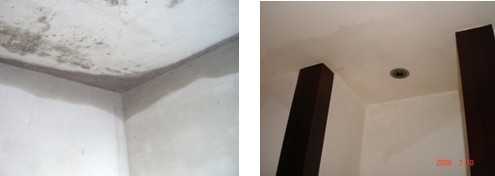
2. Water seepage:
one. Water seepage performance:
Floor seepage and water seepage at the top of the house are the most common. When the owner repossesses the building, it is necessary to carefully inspect whether the walls of the house are discolored, blistering, peeling, and dust-falling. These are the signs of water leakage. If the owner buys the top floor, be sure to check the top surface of each house for signs of rain leakage. According to the requirements of the construction, the delivery of the house used by the owner is subject to two trials of heavy rain, or the construction party has conducted rain tests on the building.
two. Water seepage hazards:
When the window seeps, when it rains, the window seeps, causing the inner wall to become wet, causing mildew and powder. When the walls seep, the walls scoop and seep, causing the walls to produce mildew and powder.
three. Seepage treatment method:
1. The ceiling leaks. This problem is in the upstairs households. If it is the bathroom upstairs, the kitchen's waterproof layer is not done, you need to knock off the floor tiles to do waterproof. In other cases, the floor drain in the toilet or kitchen of the occupants upstairs is blocked, and the accumulated water leaks through the casing of the heating pipe, causing the ceiling to become wet. The treatment method is to fill the gap between the heating pipe and the casing of the occupants upstairs. Fill the gap between the casing and the heating pipe with linseed and then fill it with oil and smooth it. In addition, try to avoid blockage in your life.
2. The window seeps. The most common reason is that the seal between the window frame and the wall is not handled properly. In this case, the owner can seal the window frame and the wall with a sealant (generally glass glue).
3. There is a crack in the outer wall, which causes the perennial asbestos in the wall to be wet or the construction hole of the outer wall not sealed. Consumers should promptly inform the property to repair, and should not be solved by themselves to avoid danger.
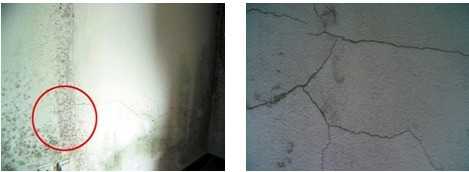
3. Crack:
one. Crack performance:
Some cracks and fine lines can be found only by careful observation, a crooked cracks clearly distributed in the wall surface, ground and windowsill, etc.; some owners found in the decoration after the original putty after mixing mortar base is also common There was cracking (there was no cracking on the surface of the putty), and the whole wall was full of small cracks; there was also a crack in the surface of the latex paint that the owner had after applying the latex paint and it was quite serious.
two. Cracking hazards:
There are many causes of cracks in the turtle. The slight cracks in the cracks have no quality effect on the wall decoration. After the putty paint is applied, cracks cannot be seen. As long as the plaster layer is not empty, you can perform normal decoration. . After the latex paint has been applied, cracks appear on the surface of the latex paint. This phenomenon should be the cause of hollowing of the mortar layer of the mixed mortar. The empty drum must be completely removed and re-moulded.
three. Crack treatment:
Reinforced concrete floor slabs can be divided into prefabricated panels and cast-in-place slabs. Cast-in-situ floor cracks, such as cracks are only on the surface, all the cracked drums are knocked out, the grassroots is cleaned, fully wetted with water, brushing slurry, and can be leveled with the same mortar. Cracks in prefabricated panels along the cracks should be widened by 5 cm along the leveling floor, and the depth should be the thickness of the board. The grass should be thoroughly cleaned, fully wetted with water, and brushed with the same grade as the original. Fine-grained concrete should be densely grouted and should be maintained for 5 to 7 days after 24 hours. Then, the 1:2 cement mortar should be leveled with the original floor. Inspection and acceptance should be passed.
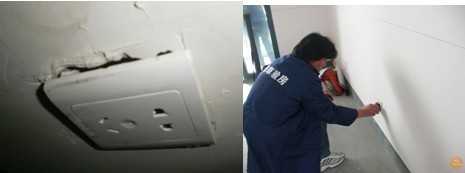
4. Circuit check:
one. Crack performance:
Using the detectors one by one, the card is plugged in and the switch is turned on. All the lights are turned on. To see which leakage protection, each outlet must be tested.
If the wiring is correct and the leakage protection problem is detected, the detector will have a corresponding light that is not on.
Circuit solution to the problem:
Directly record the problem and deliver the property for rectification.
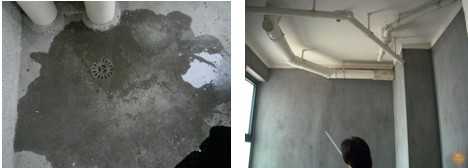
5. Pipeline launch:
one. The performance of the pipeline problem:
The waterway problem is mainly reflected in the kitchen and bathroom. The general conditions in the bathroom are 2 floor drains, a toilet water pipe, a bathtub drain pipe, and a wash basin drain pipe. See if the setting is reasonable and whether the water flow rate is smooth after pouring into the water.
two. Pipeline problems:
Bring your own plastic bags, sand, and a plastic washbasin to accept the water situation: first use the basin to hold the water, and then fill the water at each of the water areas. These are the basin water, the bathtub water, the toilet water, the kitchen and the sanitary floor drain, etc. Each sink should be filled with two pots of water, and the sound of squeaking should be heard, and no water accumulates on the surface. You can also open the faucet, make the water flow as large as possible, anxiously, look at the water pressure, and then try the drainage speed.
In addition, it is necessary to check specifically whether the toilet floor leaks or whether water is present. It is advisable to use plastic bags filled with sand on floor drains, and then store some water in the bathroom, shallow on the line (about 2 cm high), 24 hours later, to the corresponding lower bathroom to see if there is leakage at the top. If it is carried out at the same time as the upper occupant, it may also detect whether there is leakage at the top of the own bathroom. Check whether there is water on the bathroom floor. Use a plastic washbasin to store some water in the toilet, and then release the water to see if there is water accumulation on the floor. There should be no stagnant water on the qualified ground and the water flow should be smooth.
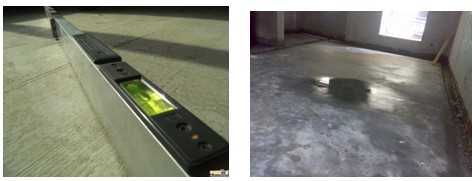
6. Level:
Processing: The experiment received this, for the general user is a certain degree of difficulty. Ground leveling is the measurement of the horizontal error between the floor and the ground in the doorway that is furthest away from the entrance. Examine this, many times can also reflect the developer's construction quality.
Because as the owner, it is impossible to accept the main structure. Then we can only look at the quality from these details. The method of measurement If you do not bother, then the method is quite simple.

7. Doors and windows
Door and window problems are dealt with:
Here is the acceptance window. The key point of acceptance is the sealing of the acceptance window and the balcony door. The most troublesome aspect of the window's sealability acceptance is that it can only be tried and tested in heavy rain. However, it can generally be confirmed by checking whether the sealant tape is intact and firm. The balcony door generally depends on the level difference between the interior and exterior of the balcony door. I have seen a situation where the level of the balcony is the same as the level of the interior, so that it is difficult to avoid the problem of rain infiltration in heavy rain.
Construction Acceptance Experiences Façade Decoration Window Paint Lacquer Paint Housing Heating Floor Tiles Glass Tiles Glass Doors Kitchen Glass Sliding Doors Bathrooms Waterproof Bathroom Doors Bathroom Vanity Bathroom Tiles Bathroom Leakage
Permanet Neodymium Magnetic Hook,Sintered Ndfeb Magnetic Hook,Magnetic Hook
Haoqi Magnetic Materials Co., Ltd. , http://www.sh-magnet.com